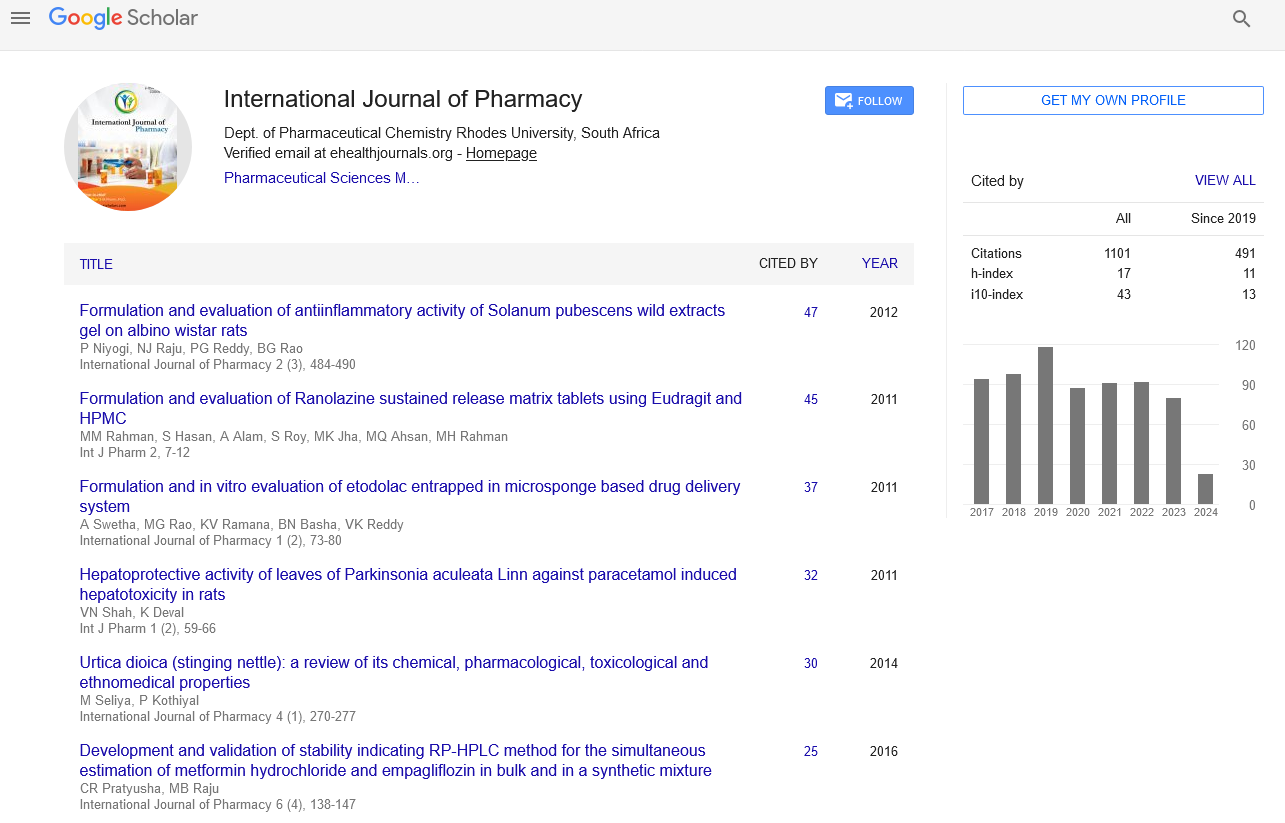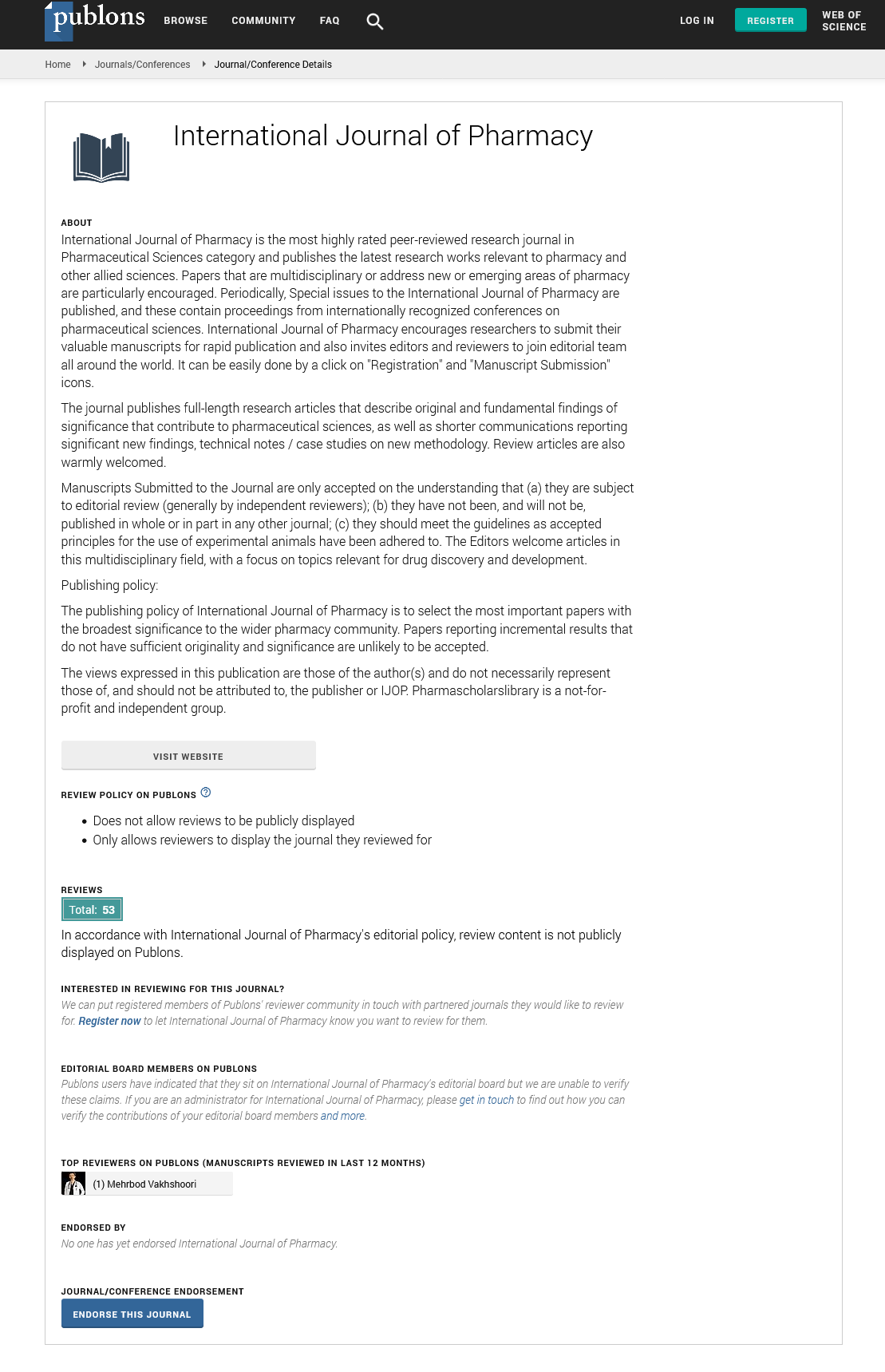Abstract
DRUG INTERACTION IN POLY PRESCRIPTIONS; EVALUATION AND MANAGEMENT
Hina Rehman, Ammar Hussain and Javeid Iqbal
Drug Interaction is increasing day by day leading to the major manifestations of Health care issues. According to “WHO” Drug Interaction was estimated to be from 6.2 % to 6.7 % per year. According to the “Journal of the American Medical Association” (JAMA 1996) reported that 108,000 American died in hospital and 2.2 million American had reaction to “FDA” permitted medication. To overcome for this scenario there are numerous sources of in sequence which accessible to Prescriber, Pharmacist and User about the Drug Interaction. In 2009, in the UK, drugs are gradually more obtainable over the counter and on-line devoid of prescription. Additionally, close at hand is widespread use of numerous herbal medicines from relatively under-regulated suppliers and the constituents of such products are often not known. This clinical reality of the widespread use of potent medicines – be they allopathic or traditional showed us the need for a practical hands-on guide that aims to be a compact, succinct and accessible source of Information for practitioners, prescribers and the public about adverse drug-Interactions. In this Cross Sectional Study total 300 Prescriptions were collected after analysis 250 informed consent have filled. Rest in 50 prescriptions the prescribing pattern errors have found including consent displeasure. In 250 prescriptions 70 is interacted and 180 is non-interacted or safe, without any significance level. The statically data have given below and graph demonstrates the interaction in all clinic, Government and private sectors hospitals. In this study poly prescription evaluation in primary, secondary and tertiary care hospitals. The percentage of interacted and non-interacted prescription is 28% in the city of Karachi, Pakistan. Female genders were more susceptible for interaction due to various causes about 17.6% and Male about 10.4% out of 28%.The major significance level is about 4% in Major Interaction, Moderate is about 13.6% and Minor is about 14.8%. Most Interaction Found in Cardiovascular is about 11.6% along with it 2.0 % interaction in Angina and 1.2% in Arrthymias.
Manuscript Submission
Submit your manuscript at Online Submission System
Google scholar citation report
Citations : 1101
International Journal of Pharmacy received 1101 citations as per google scholar report
International Journal of Pharmacy peer review process verified at publons
Indexed In
- CAS Source Index (CASSI)
- HINARI
- Index Copernicus
- Google Scholar
- The Global Impact Factor (GIF)
- Polish Scholarly Bibliography (PBN)
- Cosmos IF
- Open Academic Journals Index (OAJI)
- Directory of Research Journal Indexing (DRJI)
- EBSCO A-Z
- OCLC- WorldCat
- MIAR
- International committee of medical journals editors (ICMJE)
- Scientific Indexing Services (SIS)
- Scientific Journal Impact Factor (SJIF)
- Euro Pub
- Eurasian Scientific Journal Index
- Root indexing
- International Institute of Organized Research
- InfoBase Index
- International Innovative Journal Impact Factor
- J-Gate

